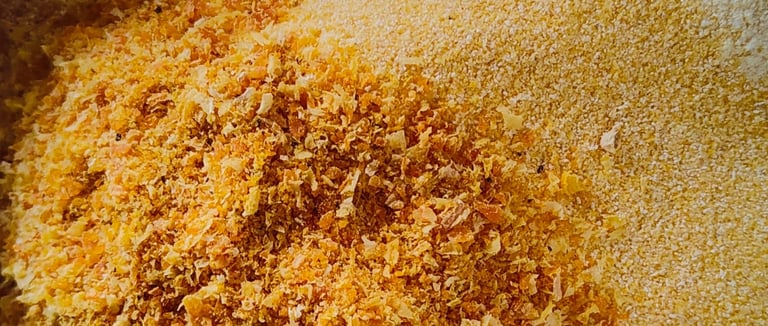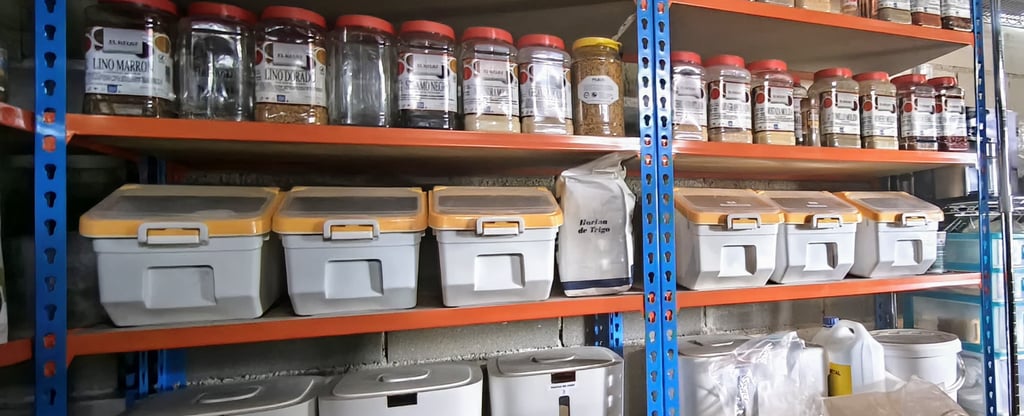Vegetable Flours in Boilies: Quality in Their Use
What Nobody Tells You (But the Fish Definitely Notices).
FORMULACIÓN CIENCIA DEL CEBO


🟦 Why Poorly Treated Vegetable Flour Can Ruin a Boilie
Quality starts where you can’t see it: inside the flour.
In the world of carpfishing, it’s common to hear about vegetable flours as if they’re all the same: soy, maize, pea, chickpea… But simply naming them isn’t enough. The difference between good and poor-quality flour can be the key to a boilie’s success or failure — even if both look identical from the outside.
🟧 What Makes a Vegetable Flour Suitable for Bait?
It’s not just the raw material itself — it’s how it’s processed, stored, and its condition at the moment of use.
A properly treated flour offers:
✅ Reduced or eliminated anti-nutrients (lectins, saponins, etc.)
✅ Better digestibility for the fish
✅ Fine, consistent texture, free from lumps
✅ Clean aroma, free from oxidation or moisture
✅ Adequate solubility to promote bait diffusion
These qualities don’t just improve the boilie technically; they also enhance cooking, structure, attraction release, and in-water performance.
🟦 Common Issues with Poorly Treated Flour:
Rancid smell, bitter taste. Even if masked by flavorings, fish detect it before you do.
Dusty or clumpy texture. Affects mixing, drying, and cooking.
Poor diffusion. Aged flours block the release of liquids and attractants.
Lower digestibility. Over time, fish reject what doesn’t sit well.
A boilie made with this type of flour might look fine, but in real fishing conditions, it simply won’t perform the same.
🟨 Real Differences Between Industrial and Artisan Processes:
This isn’t a critique — it’s just practical reality.
Industry typically works with large purchase volumes and extended storage times. This means:
Batches may sit in silos or warehouses for months.
Increased risk of oxidation or aging.
Greater reliance on stabilizers or slow-moving flours.
Artisan producers can afford to:
Make smaller, more frequent purchases.
Have direct control over each batch’s condition.
Select based on functional quality, not just price.
This ensures always working with fresh, stable, and effective flours, specifically chosen to create functional baits that respect the fish’s physiology.
🟩 Why Does Digestibility Matter?
A well-formulated boilie with properly treated flours:
Is more easily assimilated.
Provides sustained responses over time.
Avoids saturation or rejection after repeated captures.
Helps maintain natural, unforced feeding activity.
This is crucial in pressured waters or when targeting larger fish with slower, more selective metabolisms.
🟦 How Do We Apply This at Sycomorusfishing?
Our approach is simple to understand:
We don’t choose a flour for its trendiness or name. We select every ingredient based on what it technically brings to structure, solubility, digestibility, and performance on the bank.
We seek out quality suppliers who guarantee freshness and proper treatment. And when necessary, we handle treatment, particle sizing, or milling ourselves to achieve the precise result we need.
We control every sack, every texture, every aroma. We leave nothing to chance when it comes to how our bait behaves in water or how well it’s digested.
It’s not about selling “natural.” It’s about doing things properly.


